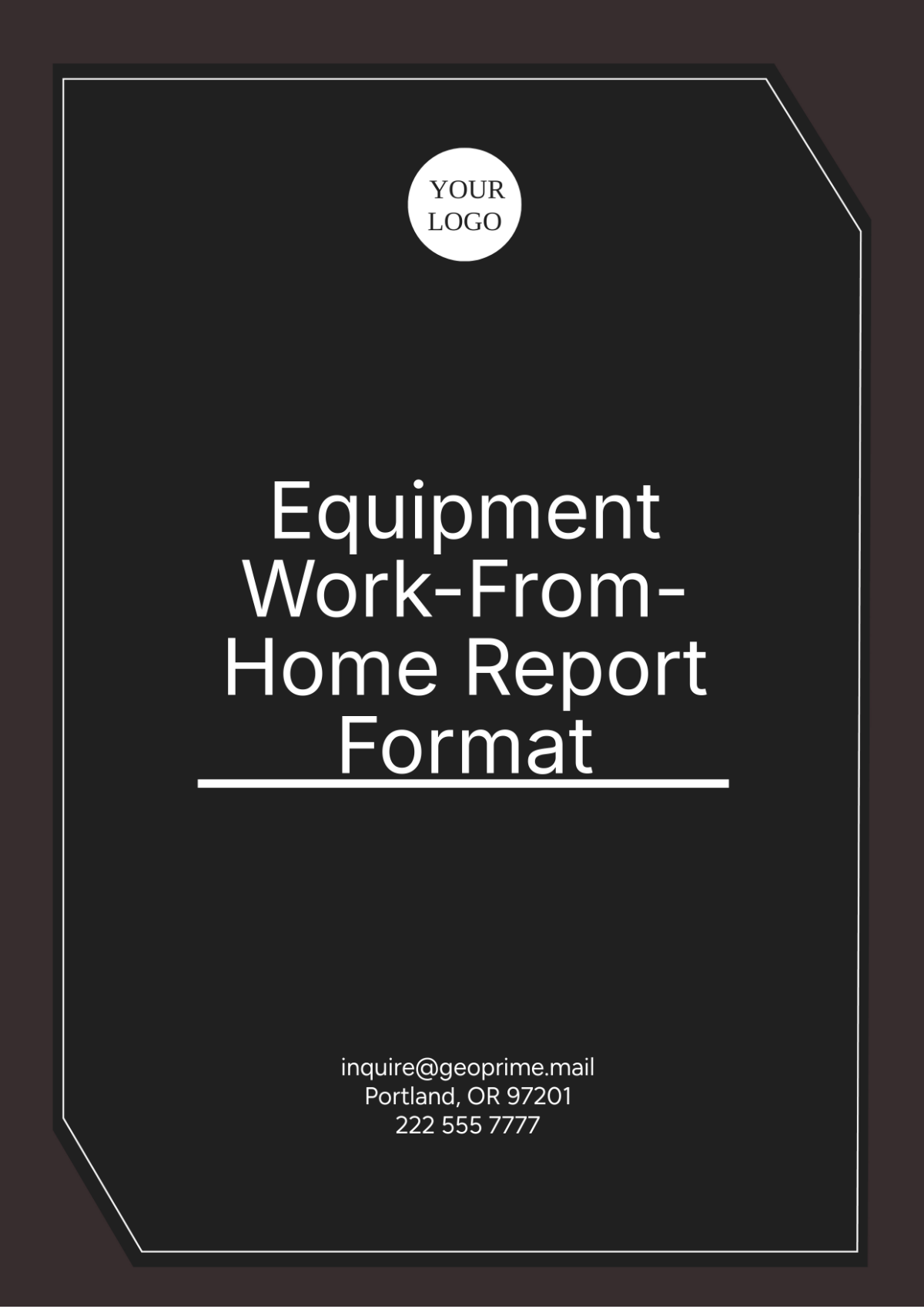Equipment Work-From-Home Report Format
I. Introduction
The rise of remote work has transformed the modern workplace, making it imperative for employers to equip their teams with the necessary tools and devices to maintain productivity while working from home. This report provides a comprehensive overview of the essential equipment required for effective remote work, assesses current employee needs, and offers actionable recommendations for improvement.
II. Essential Equipment for Remote Work
1.1 Computers and Laptops
A reliable computer or laptop is critical for remote work as it serves as the primary tool for communication, collaboration, and task completion. These devices must be capable of efficiently running necessary software and applications, including productivity suites, project management tools, and industry-specific software. Additionally, regular updates and maintenance should be prioritized to ensure optimal performance.
1.2 Internet Connectivity
Stable and fast internet connectivity is crucial for seamless remote work. Employees should have access to high-speed internet to avoid disruptions during virtual meetings and when accessing cloud-based resources. The following table outlines the recommended internet speeds based on usage:
Internet Speed | Recommended Usage |
|---|---|
25 Mbps | General browsing and document editing |
50 Mbps | Video conferencing and collaborative work |
100 Mbps | Large file transfers and simultaneous users |
1.3 Communication Tools
Effective communication is essential in a remote work environment. Employees should have access to a variety of communication tools, including:
Email software (e.g., Microsoft Outlook, Gmail)
Instant messaging platforms (e.g., Slack, Microsoft Teams)
Video conferencing tools (e.g., Zoom, Google Meet)
These tools facilitate collaboration, enhance team dynamics, and support effective information sharing among remote workers.
III. Assessment of Current Employee Needs
2.1 Survey Results
To evaluate the adequacy of current equipment, a survey was conducted among remote workers, assessing the availability and performance of their work-from-home tools. The following table summarizes the findings:
Equipment | Satisfaction Level | Percentage Satisfied |
|---|---|---|
Computers/Laptops | High | 80% |
Internet Connectivity | Moderate | 70% |
Communication Tools | High | 85% |
2.2 Identified Gaps
The survey results revealed several gaps in the current remote work setup:
10% of employees reported insufficient internet speed, hindering their ability to work effectively.
15% of employees lack dual monitors, which significantly impacts their multitasking capabilities.
8% of employees do not have proper ergonomic setups, leading to discomfort and potential health issues.
IV. Recommendations for Improvement
3.1 Upgrading Equipment
To address the identified gaps, it is recommended that employers invest in upgrading the equipment for remote workers. This includes providing high-performance computers and ensuring all employees have access to high-speed internet. Offering a range of devices tailored to employee needs can significantly enhance productivity.
3.2 Enhancing Ergonomics
Investing in ergonomic furniture and accessories, such as adjustable chairs and desks, is essential for improving comfort and reducing the risk of work-related injuries. Employers should also consider providing ergonomic assessments to help employees create a healthy and productive workspace.
3.3 Providing Training
Offering training sessions on how to effectively utilize remote work tools can enhance productivity and ensure employees maximize the features of their software and equipment. Topics may include best practices for virtual meetings, efficient use of collaboration tools, and strategies for maintaining work-life balance.
V. Conclusion
Equipping employees with the right tools and resources is fundamental to the success of remote work. By addressing current gaps and implementing the recommended improvements, employers can foster a more efficient and comfortable work-from-home environment for their staff. Investing in the right equipment, ergonomic solutions, and training opportunities will not only enhance productivity but also contribute to employee satisfaction and well-being.



















